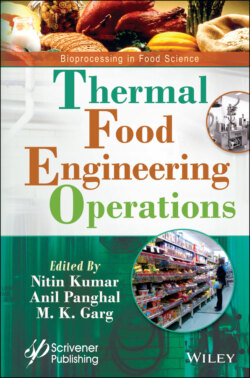Читать книгу Thermal Food Engineering Operations - NITIN KUMAR - Страница 42
2.5 Resistance of Stress
ОглавлениеAs already discussed, microbes tend to grow resistant for some time when coming in contact with varied environmental stress which causes serious issues when it comes to food safety.
Researchers have been studying for many years now how to deal with varied adaptation techniques to do the inactivation process better. Modifying the sigma factor with different RNA polymerase is probably the most significant controlling method in bacterial cells [37]. This factor governs the transcription of the genes in Gram-negative bacteria which are resistant to oxidative, heat, and osmotic stress. Therefore, inducing these sigma factors would help to activate during the cell undergoing different growth phases, may it be in stationary or exponential state [38]. But for Gram-positive bacteria a substitute sigma factor with alike physiological roles are studied in [39, 40]. This infers that a similar process for multiple stress resistance is seen for cells of Gram-negative and Gram-positive. The utmost problem that should be taken care of is to prevent microorganisms from adapting to the stress because that helps them to create a barrier and create greater protection for different other succeeding stress. This is the reason for the emergence of different novel techniques for preservation; a direct heat and traditional thermal method is causing sublethal injury as well as augmenting the sensitivity of the cells to stress when applied mechanically. This is because of some temperature-induced variations in the cell envelopes of microorganisms [41].
